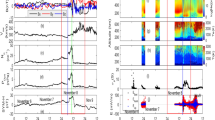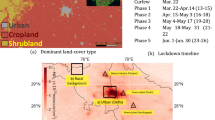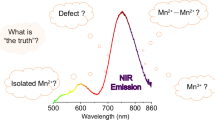Abstract
THE first negative bands of N2+ are excited in the atmosphere by energetic particle precipitation. The cross section data of Srivastava and Mirza1 imply an associated N2+ ion production rate of 14.1 ion pairs per photon in the 0–0 band or 41.5 ion pairs per photon in the 0–1 band, The total ion production rate for all species may be a few times greater and depends on the relative concentration of N2, a function of the height at which the ionizing radiation is stopped.
This is a preview of subscription content, access via your institution
Access options
Subscribe to this journal
Receive 51 print issues and online access
$199.00 per year
only $3.90 per issue
Buy this article
- Purchase on SpringerLink
- Instant access to full article PDF
Prices may be subject to local taxes which are calculated during checkout
Similar content being viewed by others
References
Srivastava, B. N., and Mirza, I. M., Phys. Rev., 176, 137 (1968).
Yano, K., Planet Space Sci., 14, 709 (1966).
Broadfoot, A. L., and Hunten, D. M., Planet. Space Sci., 14, 1303 (1966).
Millikan, R. A., Neher, H. V., and Pickering, W. H., Phys. Rev., 61, 397 (1942).
Jeunehomme, M. J., Chem. Phys., 44, 2672 (1966).
Author information
Authors and Affiliations
Rights and permissions
About this article
Cite this article
JACKA, F., SCHAEFFER, R. & FREUND, J. Mid-Latitude Atmospheric Emission of N2+ First Negative Bands. Nature 228, 984–985 (1970). https://doi.org/10.1038/228984b0
Received:
Issue date:
DOI: https://doi.org/10.1038/228984b0



